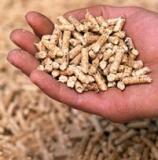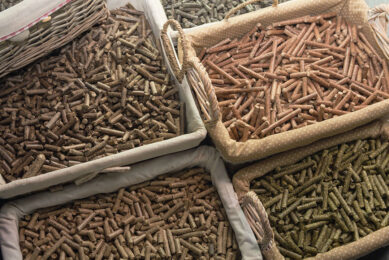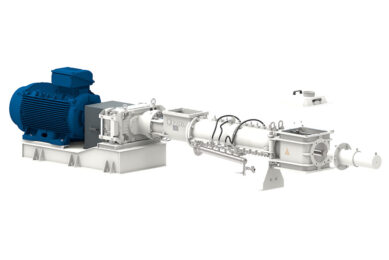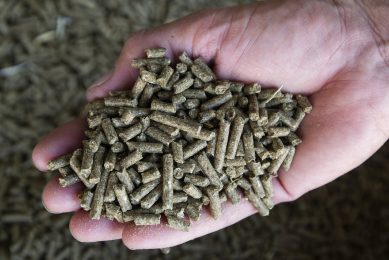Record growth in EU compound feed

In 2007, the compound feed production for the EU-27 according to Fefac data, reached 149.8 million tonnes, which is 3.4% higher than the figure for 2006. This is the highest annual growth rate registered in almost 20 years.
The key factor that influenced the compound feed market was the dramatic
price increase for all key feed materials, with two main consequences:
1) the high cereal prices encouraged farmers to put their cereals on the
market rather than using them on the farm and
2) livestock producers facing
a huge increase in feed costs – which they could not pass on to consumers of
animal products – turned to use the most efficient feed, i.e. industrial
compound feed.
Strong growth in pig sector
This was in
particular the case in the pig sector and, which explains the 3.6% increase in
pig feed production for 2007 on an EU-basis. All EU-15 member states experienced
growth in pig feed production, although on different scales (from +0.3 and +0.7%
resp. for Denmark and Spain up to +8 and +11% for resp. Germany and
Austria).
Poland registered a spectacular +23% growth, while the Czech
Republic and Hungary went down by -11%. Spain remains the first EU producing
country for pig feed with 9 million tonnes, but Germany has almost closed the
gap between both countries with 8.8 million tonnes.
Poultry feed
increases too
In poultry feed the market share of industrial compound
feed vs. home mixing is much higher than in pig feed. This explains why the
evolution of compound feed production is more closely related to the development
of poultry meat an egg production.
In this sense, the increase in
poultry feed production is largely influenced by the recovery of poultry
consumption in countries such as France and Italy which were seriously affected
by the Avian influenza crisis. These two countries with resp. +3.4 and +4.2%
however recovered only half the tonnage they lost in 2006 compared to 2005.
France is still by far the leading producing country for poultry
feed.
Bad year for cattle feed
The most significant increase is
for cattle feed with +5.3%, but as for poultry, 2006 was a “bad year” for
industrial cattle feed production. For some countries, this increase may be
explained by the high feed material prices, which traditionally leads cattle
farmers to preferably buy more compound feed rather than straight
feedstuffs.
As in 2006 Ireland showed in 2007 the opposite of other
countries with a -11% which follows a +16% in 2006 (vs. 2005). The disappointing
results in 2007 may be explained to some extent by the impossibility to import
corn gluten feed form the USA due to the zero tolerance policy in the EU
regarding not approved GMO contents.
Total compound production in the EU
is actual 1.5 million tonnes higher if the feeds produced in Luxembourg, Malta
and Greece are added to total volume, and thus reached 151.3 million
tonnes.
Outlook for 2008
According to Fefac experts, the
following factors are expected to influence the development of compound feed
production in 2008:
· Feed material prices: as in
2007 prices of feed materials are expected to remain at a high level. EU
livestock farmers, in particular pig producers, can no longer support a +50%
production cost increase and need to pass it on to consumers, otherwise we must
fear that a significant number of pig holdings will close in 2008:
· The reduction in pig production: in 2007 pig meat
production reached the top of the cycle and the production in 2008 is expected
to decrease, hence a likely reduction in the feed demand.;
· The 2% increase in dairy quotas for 2008/09 should in
principle result in a higher demand for feed and especially compound feed, as
dairy farmers may not have had time to adapt and increase the number of animals;
therefore the only solution for them to increase their production could well be
to increase animal yields.
As a consequence the Fefac experts foresee for
2008 a +1% and +2% increase resp. For cattle and poultry feed and a reduction of
pig feed by 1-2%, hence a total stagnation of compound feed
production.
Full production figures are available from the Fefac
website.
Join 26,000+ subscribers
Subscribe to our newsletter to stay updated about all the need-to-know content in the feed sector, three times a week. Beheer
Beheer









 WP Admin
WP Admin  Bewerk bericht
Bewerk bericht